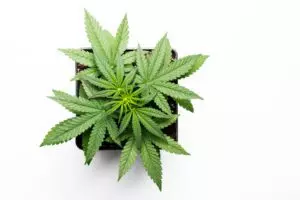Why Did My Autoflower Produce Seeds?
Autoflowering cannabis plants are a popular choice among growers for their quick growth cycle and minimal light requirements. However, discovering seeds in your autoflower harvest can be a disappointing surprise. Let’s delve into the reasons why your autoflower might be producing seeds and how you can prevent it in the future.
Understanding Autoflowering Cannabis
Autoflowering cannabis plants are unique in that they switch from the vegetative stage to the flowering stage automatically, without the need for a change in light cycle. This trait makes them an attractive option for novice growers and those with limited space or resources. However, like any plant, they are not immune to stressors that can lead to seed production.
Reason 1: Hermaphroditism
The most common reason for seed production in autoflowering cannabis plants is hermaphroditism. This is a natural response to stress, where the plant develops both male and female reproductive organs in an attempt to self-pollinate and ensure its survival.
- Stressors: Common stressors include drastic changes in temperature, light exposure, nutrient levels, and physical damage.
- Prevention: Maintain a stable growing environment and handle your plants with care to prevent stress-induced hermaphroditism.
Reason 2: Accidental Pollination
Another reason your autoflower might be producing seeds is accidental pollination from male or hermaphrodite plants in the vicinity.
- Prevention: If you’re growing multiple plants, ensure they are all female and regularly check for signs of hermaphroditism. If you discover a male or hermaphrodite plant, remove it immediately to prevent pollination.
Reason 3: Genetic Predisposition
Some autoflowering cannabis strains are genetically predisposed to produce seeds, even in the absence of male plants or stressors. This trait can be beneficial for breeders, but less so for growers seeking a seedless harvest.
- Prevention: Research your chosen strain thoroughly before planting to understand its genetic tendencies. Opt for feminized seeds from reputable breeders to reduce the likelihood of seed production.
Case Study: The Impact of Stress on Autoflowering Cannabis
A study published in the Journal of Cannabis Research found that stress significantly impacts the growth and development of autoflowering cannabis plants. The researchers found that plants exposed to stressors such as nutrient deficiency and physical damage were more likely to develop hermaphroditic traits and produce seeds.
Conclusion
While finding seeds in your autoflower harvest can be disappointing, understanding the reasons behind seed production can help you prevent it in the future. By maintaining a stable growing environment, regularly checking your plants for signs of hermaphroditism, and choosing feminized seeds from reputable breeders, you can increase your chances of a seedless harvest. Remember, growing cannabis is a learning process, and every challenge presents an opportunity for growth and improvement.




